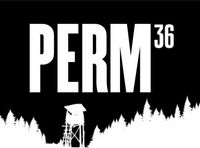Perm political camps functioned for twenty years: from 1972 through 1992.Hundreds of dissidents who were convicted of ‘anti-Soviet agitation and propaganda’, leaders of a broad variety of illegal political alliances, groups and even parties, from liberal and nationalistic to Fascist-style and Communist ones which, nevertheless, opposed the Communist Party of USSR; leaders and members of religious denominations and movements which were not recognized by Russian Orthodox Church; ‘lone-rangers’ who did not accept the official Communist ideology and practice, wrote protest letters, pamphlets and slogans were imprisoned there.
These camps also accommodated citizens of the territories USSR had annexed in the beginning of World War II, first of all, West Ukraine and Lithuania, who had been convicted of struggle for independence. They had been sentenced on the grounds of high treason and, often, also of membership in anti-Soviet organizations.
Those who had tried to flee USSR and even did so successfully but either been returned by authorities of countries they had come to or returned voluntarily for some reasons were also convicted of high treason. of the ‘traitors’ were convicted of collaborationism during World War II.
All of them, from dissidents to collaborators, were regarded as ‘especially dangerous prisoners of state’.
The ‘Perm Political Camps’ handbook, Part 1 is dedicated to population of Perm political camps. It also includes essays on history of political crimes in Russian laws and penitentiary practice.

Site “GULAG. History of one camp” is devoted to the history of Perm-36, the last political zone of the Soviet Union, and the Public Museum, which was created on the remains of this zone by a group of enthusiasts.
Nowadays the museum with all its collections, archives, expositions and exhibitions is seized by the officials from the Ministry of Culture of Perm region.
This project is an attempt to create a universal model of a museum, which exists only in the virtual space and enables almost all kinds of activities of a real museum: scientific, educational, expo-exhibition and excursion.
The initiator of the creation of this resource was the International Coalition of Museums of Conscience, created in 1999, one of the founders of which was the Public Museum “Perm 36”.
© Perm-36, 2023. All rights reserved.
